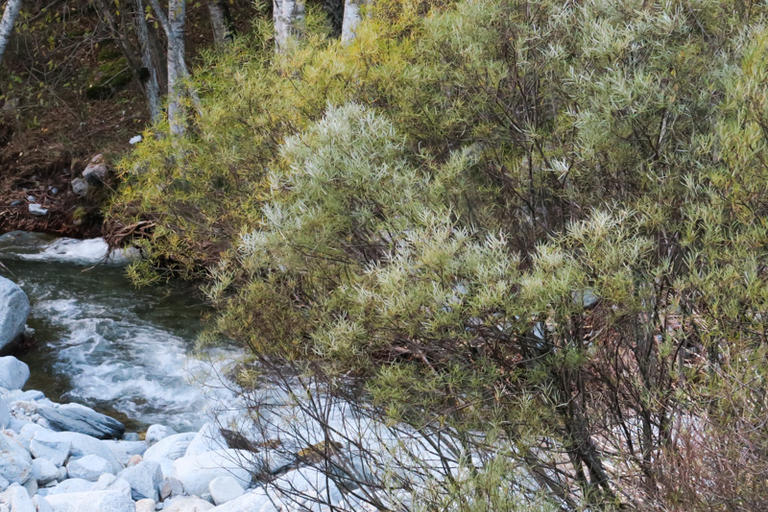
Introduction
| The alluvial plains have been exploited by the cultivation of meadows and the riverside forest has been reduced in width. |
| In the Ter terrain, the riverside forest is the mountain deciduous forest of humid areas, large-leafed ash trees with hazelnuts, trunks and birch trees, which reaches the river and diversifies with riparian species: Willow (here is a lot important) |
| Willows such as twill, linear leaf, white underneath and intense green on top (foto), the slightly larger wingspot, or the green, lightweight, green leaf, we find them on the banks and small islands from the riverbed. Willows are shallots that leave the river and can climb up the mountain between hazels and ash trees. Here we see it on the road. |
| The function of this forest is to set the banks of the river and avoid flooding in nearby plots. Obviously, if the flood is large, like the one of the year 2018, few things have to be done, but it would have been worse if this vegetation was not there. |
| These cultivated plains on the river side, usually surrounded by spontaneous vegetation, could be irrigated by means of inlet channels and drainage of grass fields. They are called closures and we know the names of those in the north and south of the nucleus of Setcases, such as the closure of the New Bridge or the Closa Gran. |
| Go back to see small Gra de Fajol. |
Images not available